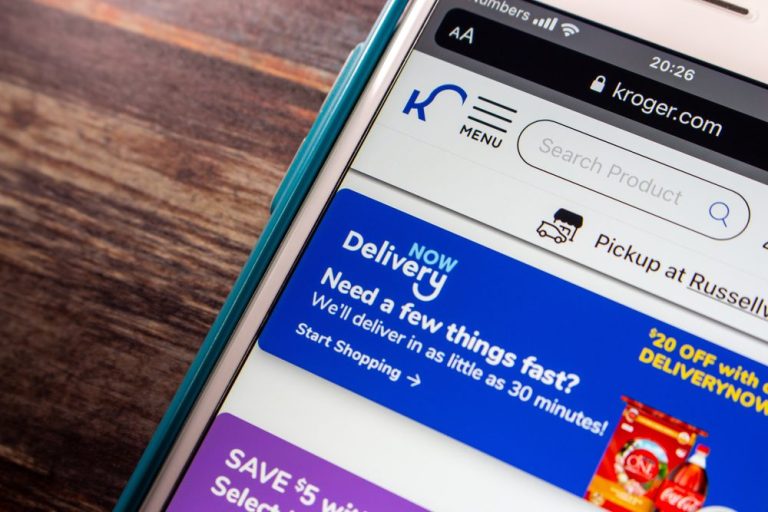
Grocers can leverage digital to drive engagement even with grocery customers shopping in stores.
In fact, many brick-and-mortar-only customers are turning to digital technologies to improve their shopping experiences, as Barbara Connors, vice president of commercial insights at 84.51°, the marketing insights subsidiary of grocery giant Kroger, observed in an interview with PYMNTS.
“Many customers go online to browse the website, to plan their shopping, to look for recipes, to look for sales and deals and then still end up shopping in store,” Connors said. “If you think about eComm customer engagement as only driving eCommerce sales, you’re missing a big opportunity to also influence the sales for those shoppers. [Don’t] count out the shoppers that are still shopping in store because it doesn’t mean that they’re not digitally engaged.”
This opportunity is key, given the relatively low penetration of eCommerce in grocery. Data from the November edition of the Digital Economy Payments study, “Digital Economy Payments: The Rise Of Mobile eCommerce,” for which PYMNTS surveyed more than 2,700 U.S. consumers about their shopping habits, revealed that brick-and-mortar sales account for 84% of grocery transactions.
Moreover, that share will not likely increase dramatically in the next year. Connors highlighted 84.51° research showing that 70% of shoppers report not planning to make any changes to their eCommerce habits this year relative to 2022. That said, younger consumers (in the 18 to 34 age bracket) are the likeliest to report planning to increase their digital engagement.
“When [these consumers] grew into doing their own grocery shopping, eCommerce was available, and so it has a stickiness that is easier than shoppers who had already established routines for years,” Connors noted.
Yet even many of those staunchly brick-and-mortar shoppers are going online or checking merchants’ apps. Consequently, grocers are noting the necessity of supplementing the in-store experience with digital convenience, as data from PYMNTS’ study “Big Retail’s Innovation Mandate: Convenience and Personalization,” created in collaboration with ACI Worldwide, reveals. For instance, the report, which drew from a survey of 300 major retailers in the U.S. and U.K., found that 74% of grocers think that consumers would be very or extremely likely to switch merchants if digital coupons and rewards were not provided to in-store customers.
Those deals and coupons are especially relevant now, with consumers seeking ways to reduce spending amid rapid food inflation. Granted, inflation has eased slightly in recent months. In August, U.S. Bureau of Labor Statistics (BLS) data showed that grocery prices were up 13.5% year over year. In December, these increases relative to 2021 were up a moderately lower 11.8%.
However, Connors noted that this alleviation had not affected shoppers’ perception of price increases or their consequent behaviors. She predicted that throughout 2023, behaviors would continue to reflect ongoing price anxiety.
“We’ve been trending the same question of, ‘How concerned are you with inflation?’ for over a year, and it’s still sitting at two thirds of shoppers that are highly concerned,” Connors said.
“The mindset around having a constrained budget and needing to make choices about what you put in a basket is one that is going to be sustained throughout this year.”